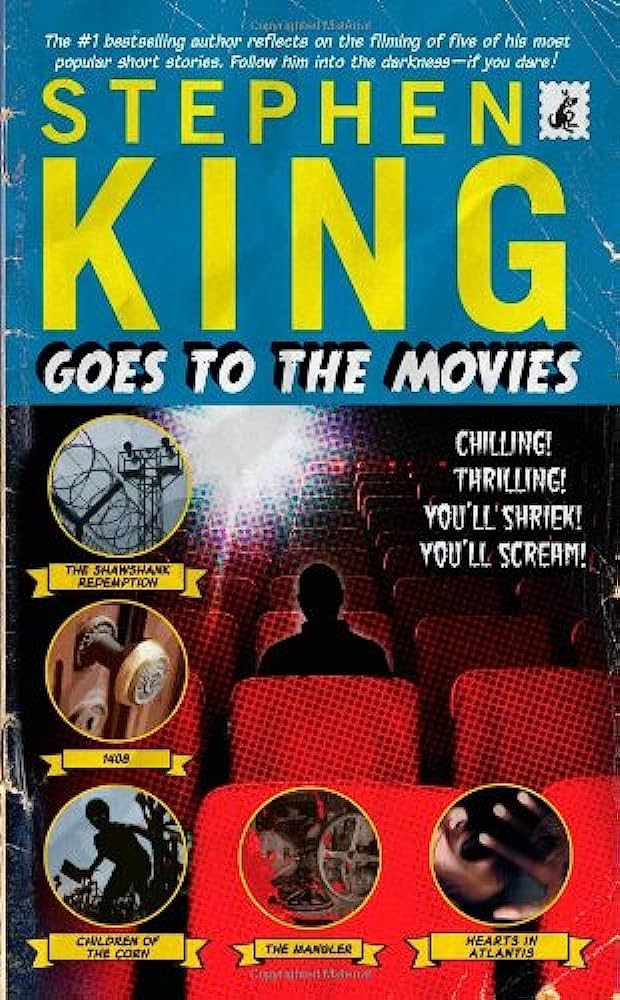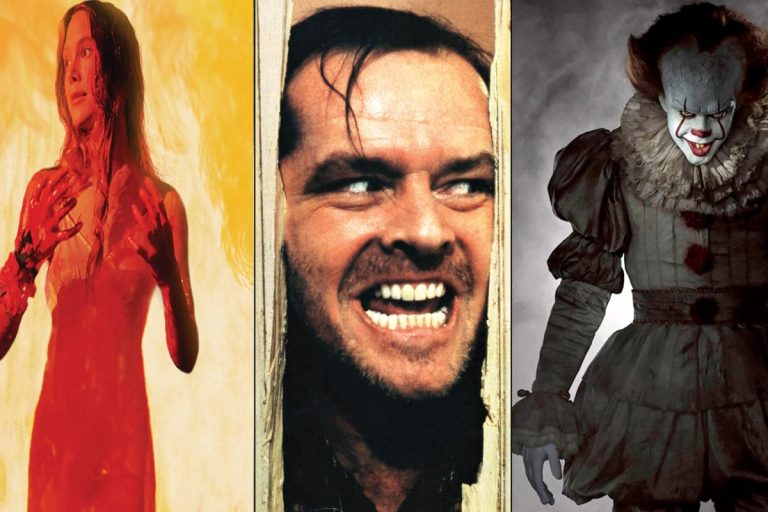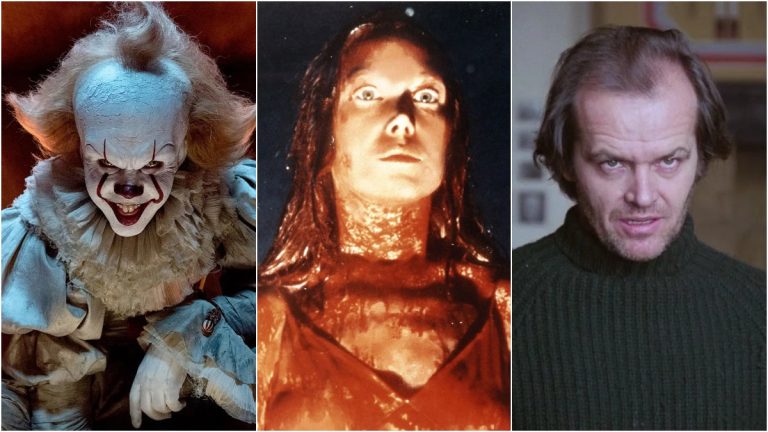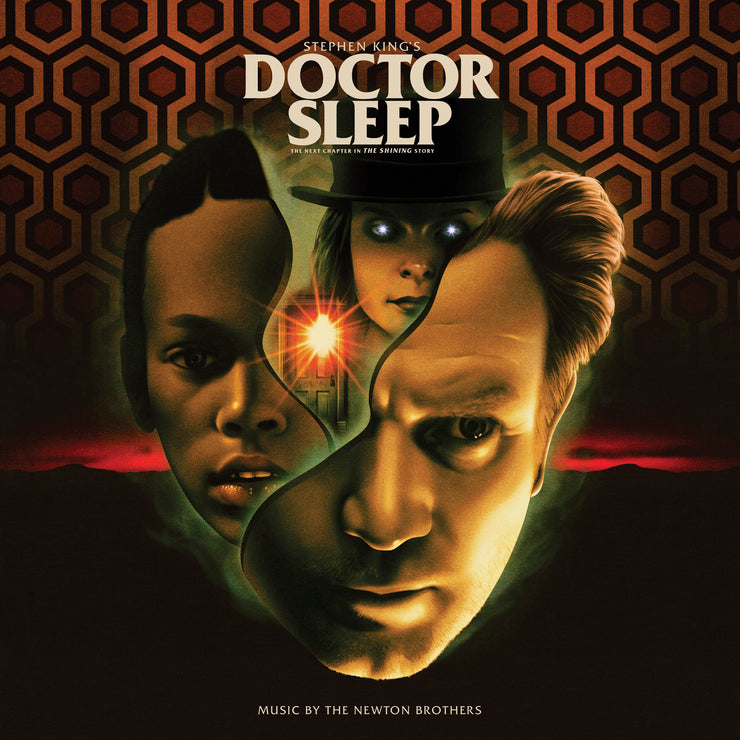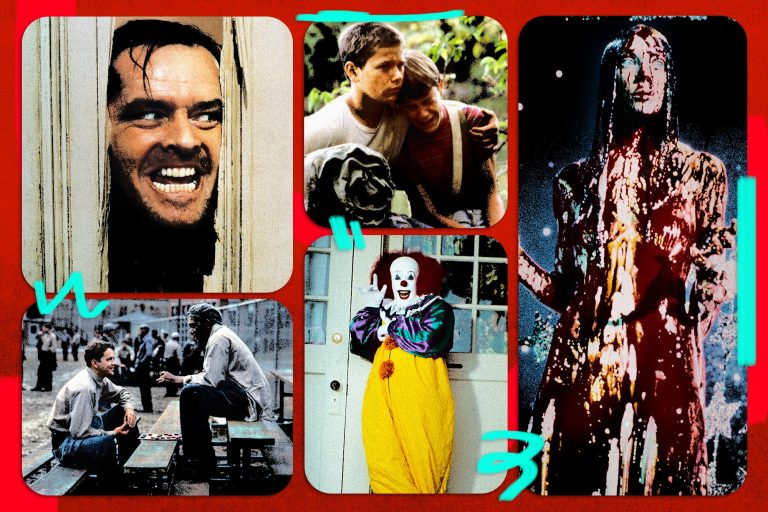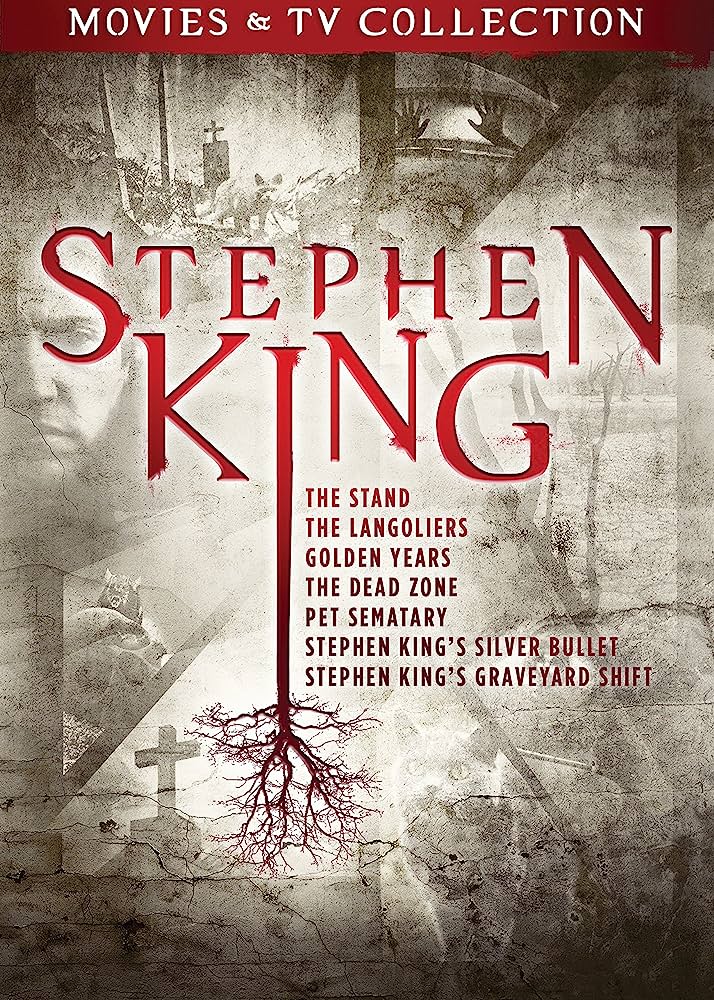Stephen King Movies: A Guide To Eerie Cinematography
Welcome, fellow fans of the macabre and the thrilling! If you’re a lover of eerie cinematography and spine-chilling stories, then you’ve come to the right place. Today, we delve into the world of Stephen King movies, where the master of horror’s iconic tales are brought to life on the silver screen. From haunted hotels to demonic clowns, Stephen King’s imagination knows no bounds, and his movies have captivated audiences for decades.
When it comes to Stephen King movies, it’s not just about the scares. It’s about the artistry behind the lens, the skillful cinematography that amplifies the suspense and sends shivers down your spine. In this guide, we’ll explore the eerie cinematography techniques used in these films, from lighting and camera angles to set design and color schemes. So, grab your popcorn, dim the lights, and prepare to be transported into a world of supernatural thrills and haunting visuals. Get ready to uncover the secrets behind the chilling cinematography in Stephen King movies!
Stephen King movies are renowned for their eerie cinematography, captivating audiences with their chilling visuals. From classics like “The Shining” to recent adaptations like “IT,” these films excel at creating an unsettling atmosphere. The use of dim lighting, shadows, and haunting locations adds to the overall sense of dread. The directors’ mastery of suspenseful camera angles and atmospheric color palettes contributes to the eerie vibe. If you’re a fan of Stephen King’s work or enjoy spine-tingling movies, these films are a must-watch!
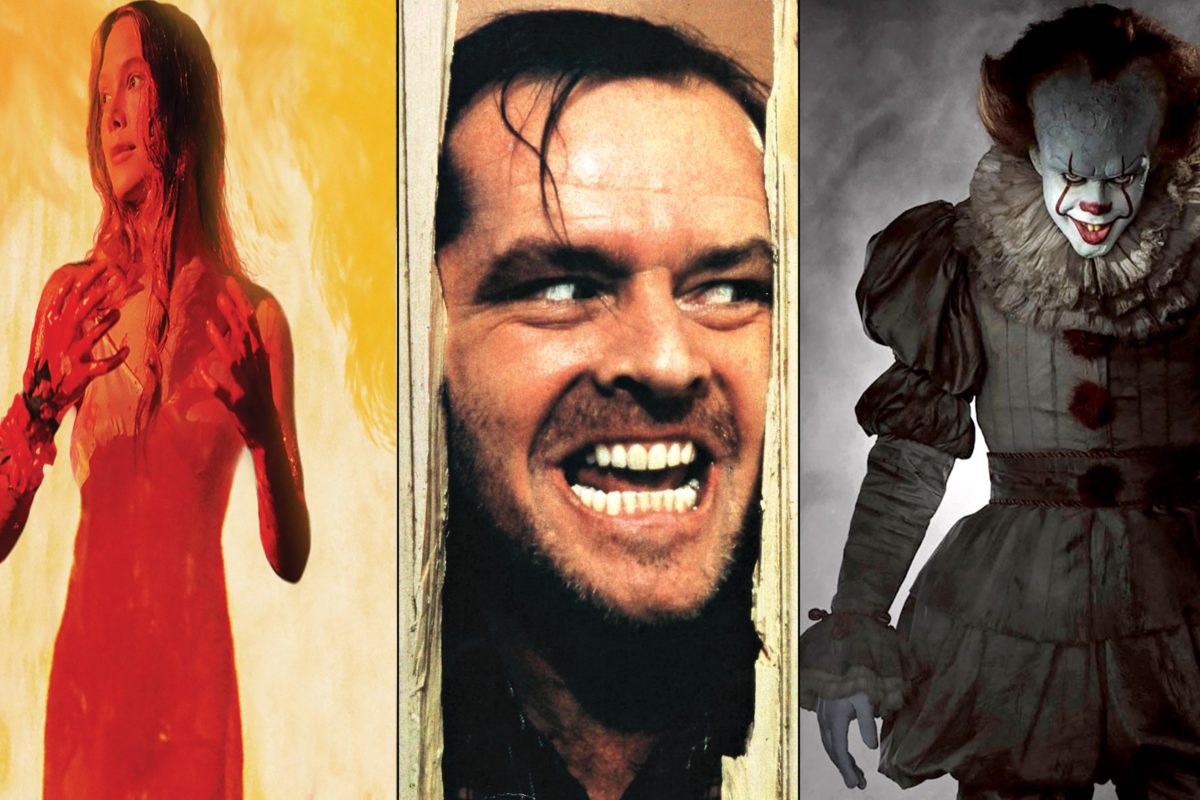
Stephen King Movies: A Guide to Eerie Cinematography
Stephen King, the master of horror, has captivated audiences for decades with his chilling novels and their adaptations on the big screen. One of the standout elements in many of his movies is the eerie cinematography that brings the stories to life in a haunting and atmospheric way. In this article, we will explore the world of Stephen King movies and delve into the techniques used to create that eerie atmosphere that keeps viewers on the edge of their seats.
The Power of Lighting and Shadows
When it comes to creating a sense of unease and tension, lighting and shadows play a crucial role in Stephen King movies. The strategic use of low lighting, harsh contrasts, and deep shadows enhances the overall atmosphere and adds to the suspense. By manipulating light sources and carefully placing shadows, cinematographers create a visual language that speaks directly to the viewer’s subconscious fears.
In movies like “The Shining” and “It,” the lighting design helps to establish the eerie tone right from the start. Dark corridors, dimly lit rooms, and flickering lights all contribute to a feeling of dread and uncertainty. The interplay between light and shadow heightens the sense of the unknown, keeping the audience on edge throughout the film.
The Importance of Location and Set Design
In Stephen King movies, the locations and set designs are often characters in their own right. From the iconic Overlook Hotel in “The Shining” to the small town of Derry in “It,” each setting is carefully chosen to evoke a specific mood and enhance the eerie atmosphere. Whether it’s a decrepit mansion, a desolate town, or a claustrophobic underground sewer system, the locations in these films are designed to immerse the audience in a world filled with unease and foreboding.
The attention to detail in set design is crucial in creating the right atmosphere. Every prop, every piece of furniture, and every detail is meticulously chosen to contribute to the overall sense of dread. The use of dark colors, worn-out textures, and decaying elements adds to the unsettling nature of the scenes. By paying close attention to these elements, filmmakers can transport viewers into the eerie world of Stephen King’s imagination.
Visual Effects and Practical Makeup
While practical effects and makeup may seem old-fashioned in the age of CGI, they play a vital role in creating the eerie visuals in Stephen King movies. From grotesque monsters to horrifying transformations, practical effects bring a tangible quality to the screen that CGI often fails to achieve. The use of prosthetics, animatronics, and makeup allows filmmakers to create realistic and unsettling creatures that elicit genuine fear from the audience.
Movies like “Carrie” and “Misery” showcase the power of practical effects in creating memorable and chilling moments. The iconic blood-soaked prom scene in “Carrie” and the brutal hobbling scene in “Misery” are prime examples of how practical effects can leave a lasting impact on viewers. These practical effects not only enhance the overall eeriness of the films but also make the horror more visceral and tangible.
The Role of Sound and Music
In Stephen King movies, sound and music are essential tools in building suspense and creating an eerie atmosphere. The right combination of eerie sound effects, unsettling melodies, and eerie scores can elevate a scene from merely unsettling to downright terrifying. The use of silence, sudden jarring sounds, and dissonant tones all contribute to the sense of unease that permeates these films.
Movies like “The Mist” and “Pet Sematary” use sound and music to great effect, heightening the tension and adding an extra layer of dread. The haunting melodies and unsettling noises become ingrained in the viewer’s mind, lingering long after the movie ends. By carefully crafting the sonic landscape, filmmakers can manipulate the audience’s emotions and keep them on the edge of their seats throughout the film.
The Legacy of Stephen King Movies
Stephen King movies have left an indelible mark on the horror genre, and their eerie cinematography has become a defining characteristic of his adaptations. The attention to detail in lighting, set design, practical effects, and sound creates a sense of unease that lingers with viewers long after the credits roll. From iconic classics like “The Shining” to recent hits like “It,” these films continue to captivate audiences and solidify Stephen King’s status as the master of eerie storytelling.
Whether you’re a fan of horror or simply appreciate the art of cinematography, exploring Stephen King movies is a journey into the dark and atmospheric world of fear and suspense. So grab some popcorn, turn down the lights, and prepare to be immersed in the eerie cinematography that brings Stephen King’s stories to life on the big screen.
Key Takeaways: Stephen King Movies – A Guide to Eerie Cinematography
- Stephen King movies often have eerie cinematography that adds to the suspense and horror.
- Lighting plays a crucial role in creating a creepy atmosphere in Stephen King movies.
- Camera angles and shots are used strategically to build tension and create a sense of unease.
- Sound design, including eerie music and unsettling sound effects, enhances the overall creepiness of Stephen King movies.
- Visual effects and practical effects are used to bring supernatural elements to life in Stephen King movies.
Frequently Asked Questions
1. Which Stephen King movies have the most eerie cinematography?
When it comes to Stephen King movies, there are several that stand out for their eerie cinematography. One such film is “The Shining,” directed by Stanley Kubrick. The use of long, sweeping shots and the iconic tracking shots through the empty hallways of the Overlook Hotel create a sense of unease and isolation. Another film with haunting visuals is “It,” directed by Andy Muschietti. The dimly lit streets of Derry and the atmospheric lighting in Pennywise’s lair contribute to the overall creepy atmosphere of the film.
Additionally, “Carrie,” directed by Brian De Palma, utilizes slow-motion sequences and dream-like visuals to enhance the supernatural elements of the story. “Misery,” directed by Rob Reiner, employs claustrophobic framing and intense close-ups to capture the psychological tension between the characters. Lastly, “Pet Sematary,” directed by Mary Lambert, makes effective use of shadow and darkness to create a foreboding and unsettling atmosphere.
2. How does Stephen King’s writing style translate into eerie cinematography?
Stephen King’s writing style is known for its ability to create vivid and terrifying imagery in the minds of readers. When adapted into film, his stories often translate into eerie cinematography through various techniques. One common approach is the use of atmospheric lighting, such as dimly lit scenes or harsh shadows, to create a sense of unease and suspense.
In addition, directors often employ unsettling camera angles and compositions to mimic the disorienting and disturbing nature of King’s narratives. Wide-angle shots can make spaces feel distorted and unnerving, while close-ups on characters’ expressions can heighten the intensity of their emotions. Slow-motion sequences and jump cuts are also frequently used to build tension and capture the sudden shocks that are a trademark of King’s storytelling.
3. How does color grading contribute to the eerie atmosphere in Stephen King movies?
Color grading plays a crucial role in establishing the eerie atmosphere in Stephen King movies. Directors often use a desaturated color palette, with muted tones and cooler hues, to create a sense of bleakness and unease. This stripped-down color scheme enhances the dark and foreboding tone of the films.
Furthermore, the strategic use of color can evoke specific emotions and enhance the storytelling. For example, the use of red in scenes of violence or supernatural occurrences can heighten the sense of danger and intensity. Conversely, the use of blue or green tones can create a cold and unsettling atmosphere. Overall, color grading in Stephen King movies is a powerful tool for creating a visually haunting experience.
4. How do sound design and music contribute to the eerie atmosphere in Stephen King movies?
Sound design and music play a crucial role in establishing the eerie atmosphere in Stephen King movies. The use of atmospheric sound effects, such as creaking doors, whispers, or distant screams, can create a sense of unease and anticipation. These subtle sounds add depth to the scenes and immerse the audience in the unsettling world of the film.
In addition to sound effects, the musical score is carefully crafted to enhance the eerie atmosphere. Creepy melodies, dissonant chords, and haunting themes are often used to heighten tension and evoke a sense of dread. The combination of sound design and music creates an immersive experience that leaves viewers on edge throughout the film.
5. How do practical effects contribute to the eerie visuals in Stephen King movies?
Practical effects play a significant role in creating the eerie visuals in Stephen King movies. The use of practical effects, such as prosthetics, animatronics, and makeup, adds a tangible and realistic element to the horror. These practical effects can bring the terrifying creatures and supernatural occurrences to life, making them more believable and unsettling.
Furthermore, practical effects often allow for more interaction between the actors and the physical elements of the scene, enhancing the sense of fear and danger. Whether it’s the grotesque transformations in “The Fly” or the monstrous Pennywise in “It,” the use of practical effects adds a visceral quality to the eerie visuals, leaving a lasting impression on the audience.
How Stephen King Scares You In 3 Steps | The Art Of Film
Final Summary
With their captivating storytelling and eerie cinematography, Stephen King movies have become a cinematic universe all on their own. From spine-chilling horror to psychological thrillers, these films have managed to capture the essence of King’s written works and bring them to life on the silver screen. Whether you’re a die-hard fan or just looking for a good scare, these movies offer a unique viewing experience that is sure to leave you on the edge of your seat.
In conclusion, Stephen King movies have left an indelible mark on the world of cinema, thanks in large part to their masterful use of cinematography. The combination of atmospheric lighting, haunting visuals, and suspenseful camera angles creates a sense of unease that lingers long after the credits roll. So, the next time you’re in the mood for a thrilling movie night, consider delving into the world of Stephen King and experience the eerie cinematography that has made his movies a genre of their own. Get ready to be captivated, frightened, and thoroughly entertained as you embark on a cinematic journey like no other.

